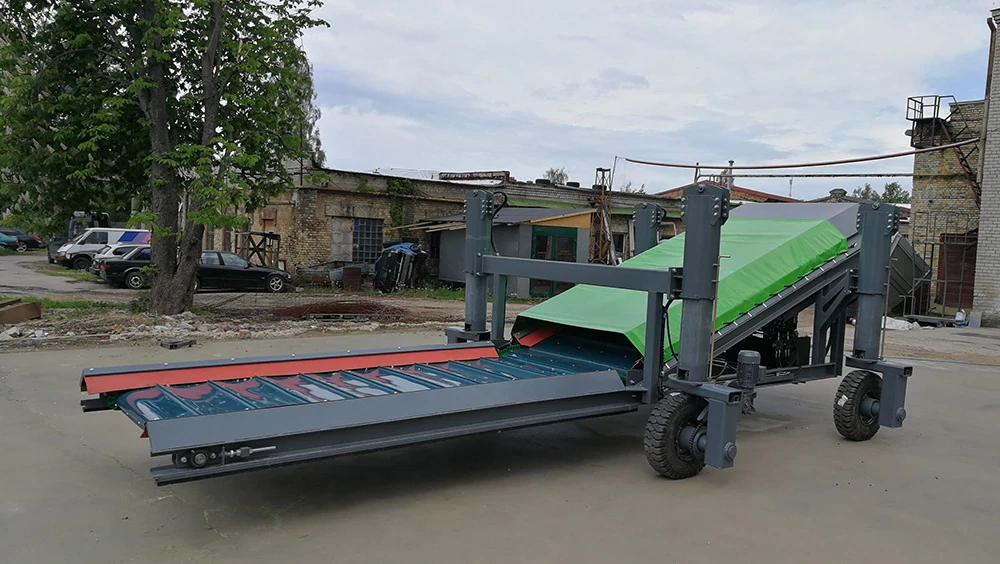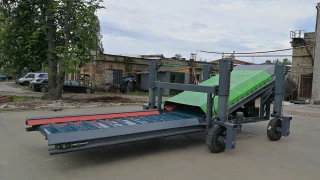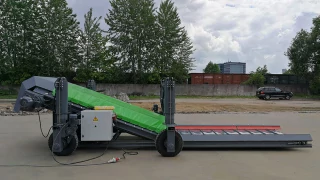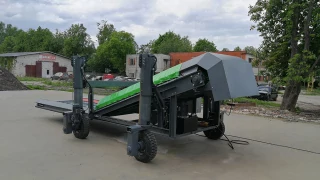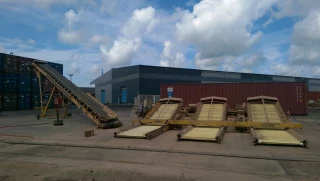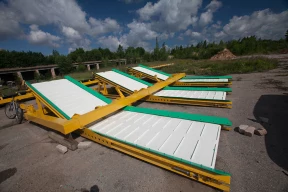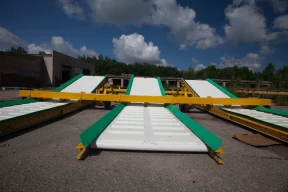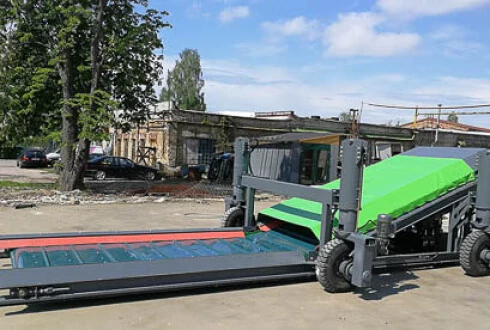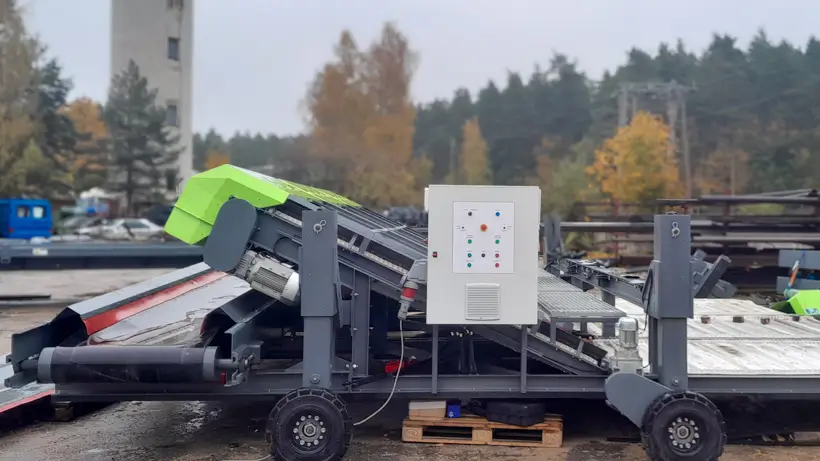
The mobile rail unloader system is designed for handling bulk material from the bottom of the hopper without the need for an additional pit or other hopper. The specially designed and processed carrying belt is used on the Hopper wagon unloading system, which does not allow product milling, grinding, or rubbing during the process.
Benefits
The usual mobile conveyor productivity is relatively low; however, Smartteh’s Hopper wagon unloading system can reach productivity up to 800 m3/h, exceeding productivity several times that of other analogous solutions.
-
Fewer product damages during the material transportation thanks to a specially designed belt;
-
Improved productivity
-
Labour cost savings
-
Savings on wagon renting
-
Prevented air pollution problem
-
Increased operational productivity of producers, transhipments, and consumers
-
Improved such important parameters as the unloading time, mobility, and fewer losses of material residuals during the transportation process
-
Affreightment cost reduction
How it works
- With the help of specially designed belt-type conveyors the bulk material is handled in a very gentle way;
- Equipment is placed on a wheeled chassis and is equipped with a stationary control cabinet or radio remote control;
- Four hydraulic cylinders provide adjusting (push down/lift up) the height of the equipment to the height of the railway;
- With electric-powered drive, wheels allow machines to enter under and exit from the wagon’s bottom;
- The same table conveyors can be adjusted to wagon hatches with hydraulic drive.
Transporters under the wagon (3 pcs):
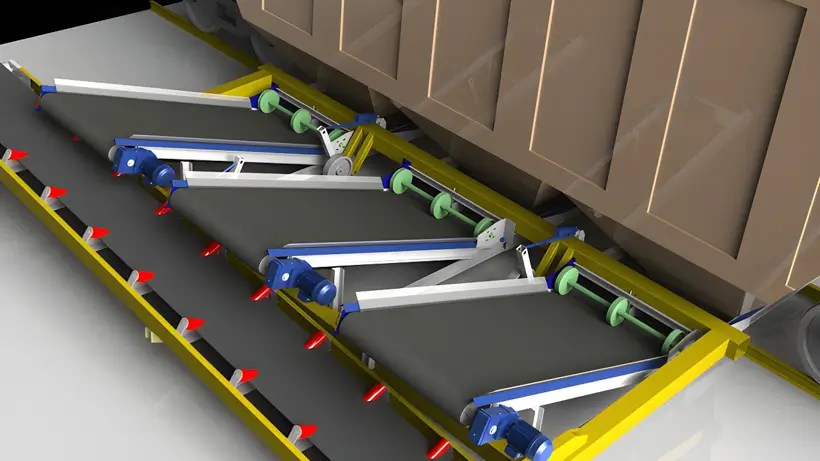
Receiving transporter (1 pcs):
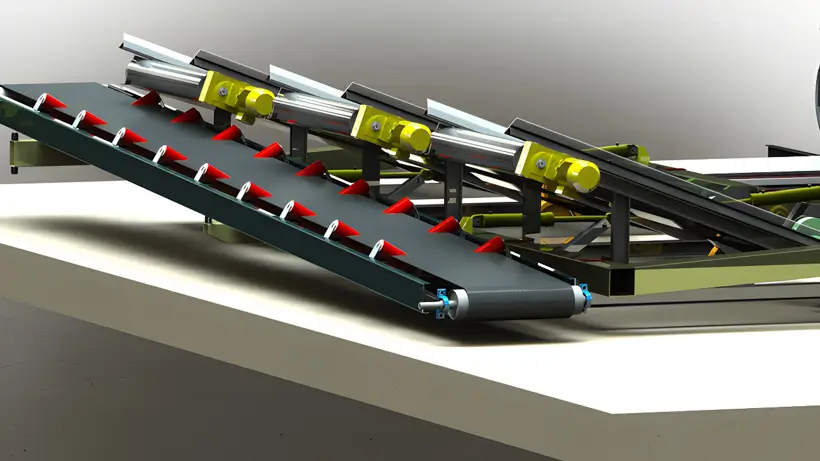
Industries

Logistics

